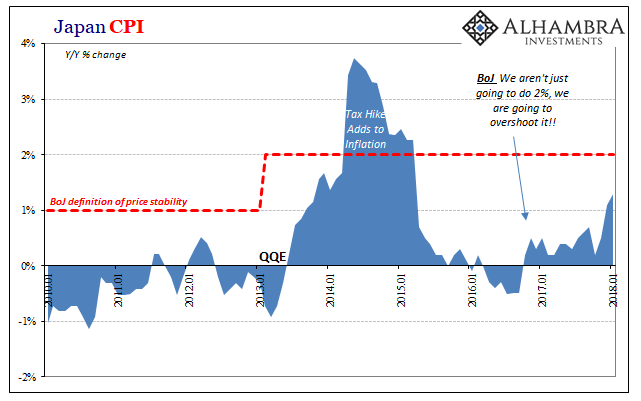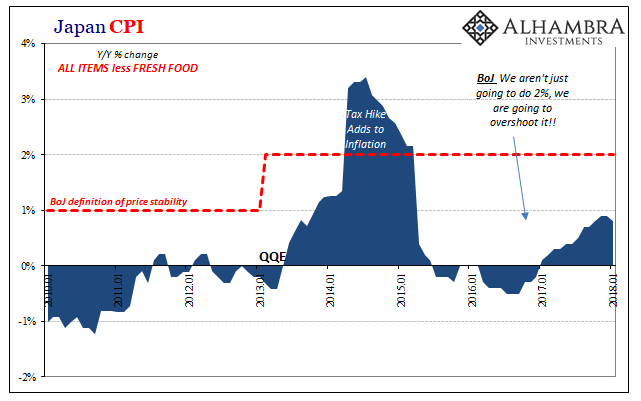Last week, Bank of Japan Governor Haruhiko Kuroda unleashed a mini-controversy with remarks he now claims were taken somewhat out of context. On March 2, speaking before Japan’s parliament, the central banker sure sounded quite confident:
Right now, the members of the policy board and I think that prices will move to reach 2 percent in around fiscal 2019. So it’s logical that we would be thinking about and debating exit at that time too.
In this age of inflation and boom hysteria, it’s understandable that this statement would be shopped worldwide as proof of it. The yen surged to a new high, which was further seized upon as markets behaving like this was all real.
Today, Kuroda has been appropriately admonished, or at least it appears that way. Walking back his comments, BoJ’s leader now says, “Right now it’s too early to debate what tools we should use, and what kind of pace we should take.” He further “clarified” that his fellow policymakers are only thinking about what might happen if their view proved to be the correct one.
That’s the real question; what are the chances of that?
Stepping back from what he said, as well as the absurdity surrounding it, Haruhiko Kuroda has been saying April 2019 as a potential target for exit for years. This really isn’t anything new. Nor is the timing particularly important. It is more political than economic condition (another “data dependent” central bank).
BoJ Governors rarely serve more than one five-year term. Kuroda’s expires this April, his first month on the job bringing with him the April 2013 grand QQE experiment. There are all sorts of rumors that despite his advanced age, 73, he will be retained to see out his 2% target in a bid toward policy stability.
Since that isn’t going to happen anytime soon, the projection for it remains just over the horizon as it always has been. Remember, Kuroda’s first inflation projection was that it would take two years for 2% to be reached. The BoJ even raised its definition of price stability from 1% concurrently. It was expected this would be reached by April 2015.


After just about five years now, did QQE work? Inflation is the target from which that question was supposed to be answered. Japanese consumer prices are rising, but aren’t yet close to the target let alone staying there in sustained fashion.













Leave A Comment